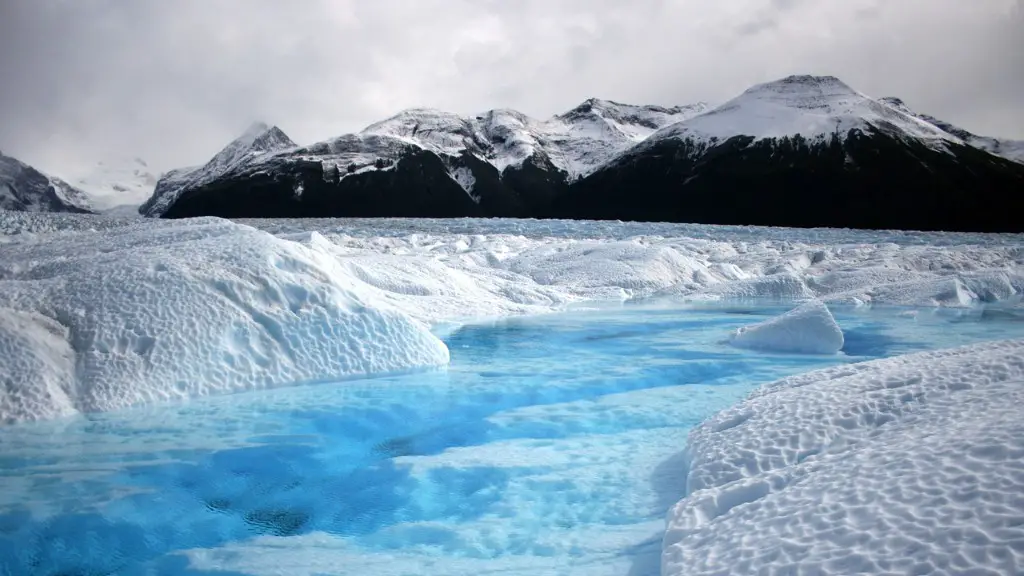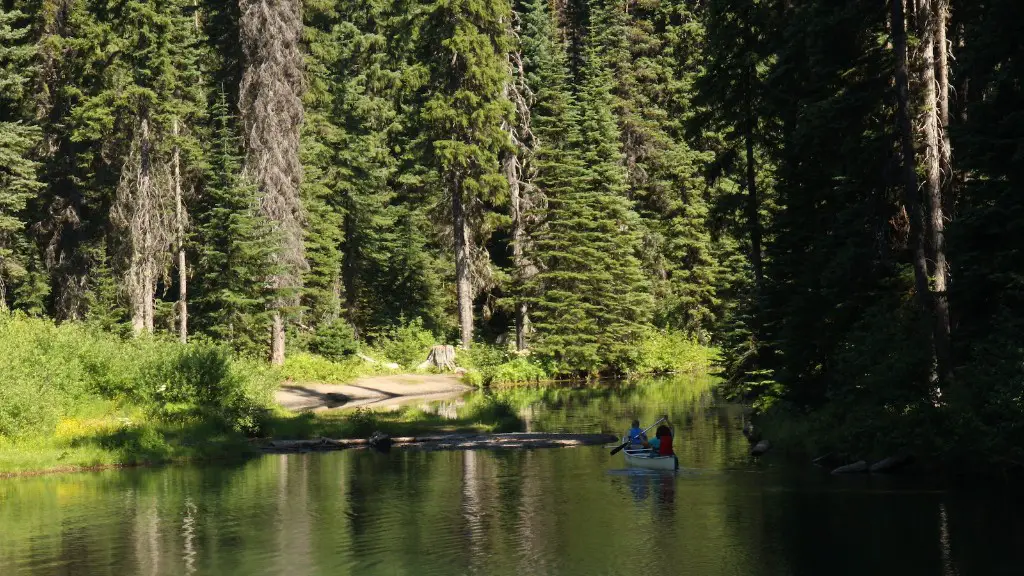The Amazon River is the largest river in South America and is an important part of the continent’s ecosystem. However, the river is facing a number of serious problems. These include pollution from industry and agriculture, as well as the effects of climate change. The Amazon River is also under threat from damming and other development projects. All of these factors threaten the river’s ecosystem and the biodiversity that it supports.
The Amazon River is the largest river in the world by volume of water carried, and it faces many problems because of this. The first problem is that the river is so big that it is difficult to clean up pollution. The second problem is that the river is a source of drinking water for many people, and when it is polluted, it can make people very sick. The third problem is that the river is home to many different species of animals, and when the river is polluted, it can kill them.
What challenges does the Amazon River face?
The Amazon is the world’s largest rainforest and is home to an incredible array of plant and animal species. Yet despite its vastness and importance, the Amazon faces a deluge of threats. A dam-building spree across the basin is disrupting fish migration and nutrient cycling, large-scale deforestation is destroying habitats and increasing sedimentation, pollution from mining and agribusiness is affecting aquatic ecosystems. These threats are putting the Amazon and its unique biodiversity at risk.
Tropical rainforest waters are highly threatened today by hydroelectric damming projects, erosion from deforestation, overfishing, and poisoning from oil and chemical spills. These threats put the rainforest ecosystem and the people that rely on it at risk. To protect the rainforest and its people, we must take action to reduce these threats.
What is affecting the Amazon River
The Amazon rainforest is one of the most important ecosystems on Earth. It is home to an incredible diversity of plant and animal life, and plays a vital role in regulating the global climate. However, this unique ecosystem is under threat from human activity.
Mining, logging, ranching, agriculture, and oil and gas extraction have all put unsustainable pressure on the Amazon rainforest. This has led to deforestation and habitat loss, which has in turn had a devastating impact on the plants and animals that call the rainforest home.
It is essential that we take action to protect the Amazon rainforest. We must reduce our reliance on its resources, and work to restore the damage that has already been done. Only then can we hope to preserve this vital ecosystem for future generations.
The biggest driver of deforestation in the world is industrial agriculture. In Brazil, cattle ranchers and land-grabbers set the Amazon on fire to illegally clear land and expand their destructive business. This is not only devastating to the environment, but it also hurts the indigenous people who live in the Amazon. We need to put a stop to this destruction and protect the Amazon.
What is the biggest challenge Amazon is facing?
From a high level, cash flow is simply the movement of money in and out of your business. For Amazon sellers, this generally refers to the timing of when you receive payments from Amazon (i.e. your Amazon settlements) and when you have to pay your suppliers.
The goal is to have more money coming in than going out, but that can be easier said than done. Many sellers find themselves in a situation where they have to wait weeks or even months to get paid by Amazon, but they have to pay their suppliers much sooner. This can create a real cash flow crunch.
There are a few ways to manage this challenge:
1. Use Amazon’s extended payment terms: If you’re an Amazon Professional Seller, you can take advantage of Amazon’s extended payment terms, which gives you up to 60 days to pay for your inventory. This can help to even out your cash flow a bit.
2. Get creative with financing: There are a number of financing options available for Amazon sellers, such as loans, lines of credit, and even factoring (selling your Amazon settlements for cash). This can help you bridge the gap between when you have to pay your suppliers and when you actually get paid by Amazon.
The growth of populations in countries with rainforest has led to an increase in worldwide demand for tropical hardwoods. This has put a greater strain on the rainforests, as they are being cleared for cattle grazing and soya plantations. South America is particularly affected by this, as it has the largest area of rainforest in the world.
What are the major threats to river?
The ecological health of river ecosystems is under threat from human activities. These threats include land-use changes (such as conversion of forests, grasslands, and wetlands to urban or agricultural uses), dams, pollutant loadings, alteration of natural drainage characteristics, introduced species, overharvesting, and climate change.
River ecosystems provide many benefits to humans, including water supply, food, energy, transportation, recreation, and flood control. However, our growing population and demand for resources is putting increasing pressure on these ecosystems, and we must be careful not to degrade or destroy them.
There are many reasons why the Amazon rainforest is becoming endangered. One of the biggest threats to the rainforest is climate change. As the Earth’s temperature rises, the rainforest is becoming drier and more susceptible to fires. Habitat destruction is another major threat to the rainforest. Deforestation, logging, and mining are all activities that destroy the rainforest. Hunting is also a major threat to the rainforest. Hunting for food and for trophies is decimating many species of plants and animals.
What is the threat Amazon forest is facing in modern times
Logging, power plants, the paper industry, and the cattle industry are all responsible for cutting down rain forest trees. This has a devastating effect on the environment, as rain forests are vital to the planet’s ecology. Not only do they provide a home for a huge diversity of plant and animal species, but they also play a role in regulating the global climate. Deforestation of rain forests is therefore a major concern for environmentalists.
Deforestation in the Amazon is largely driven by two factors: expansion of ranching and unsustainable farming practices. Both of these activities clear forests and leave areas more prone to fires, which can quickly become out of control. In order to protect the Amazon and its valuable resources, it is crucial that these activities are curbed and that more sustainable practices are put in place.
Is the Amazon river drying up?
It is becoming increasingly clear that climate change is having a profound impact on our planet in a variety of ways. One of the most significant impacts is the way it is altering the distribution of precipitation around the world.
While climate change increases the occurrence of torrential downpours and floods in some locations, it seems to be sending more frequent and more severe droughts to the Amazon Basin. This is having a devastating impact on the rainforest and the communities that rely on it.
It is imperative that we take action to mitigate the effects of climate change and protect the Amazon Basin before it is too late.
The Brazilian Amazon has seen a decrease in forest cover of 8 percent since 1970, with an estimated loss of 3,290,125 km2 by 2020. This loss is attributed to a variety of factors, including deforestation, wildfires, and changes in land use.
What is happening to the Amazon rainforest 2022
Despite a 11% drop in deforestation in the Brazilian Amazon between Aug 1, 2021 and July 31, 2022, the rate at which the rainforest is being cleared has soared under President Jair Bolsonaro.
According to data from Brazil’s National Space Research Institute (INPE), an area equivalent to the size of Qatar was cleared in the Amazon during the 12-month period.
The sharp increase in deforestation is a worrying trend, particularly given the vital role the Amazon plays in regulating the global climate. The rainforest is often referred to as the “lungs of the planet” due to the immense amount of carbon dioxide it absorbs.
The Brazilian government has been widely criticized for its handling of the Amazon, with Bolsonaro accused of prioritizing economic development over environmental protection. The president has also been accused of weakening environmental laws and cutting funding for enforcement.
The soaring deforestation rate is a major setback in the fight to protect the Amazon and its vital role in the global climate.
A recent study has found that the Amazon rainforest is now emitting more carbon dioxide than it is removing from the atmosphere. This is a major problem because the Amazon is considered a key weapon in the fight against climate change. The study shows that the rainforest is being destroyed, which is contributing to the increase in carbon dioxide emissions. This is a serious issue that needs to be addressed urgently.
How much of the Amazon is deforested 2022?
The report is quite alarming and it is important to take note of the continuing deforestation. The report said that between January and December 2022, deforestation reached 10,573 square kilometers (4,082 square miles), while overall deforestation from 2019-2022 reached 35,193 km² (13,588 square miles). This is a continuing trend and it is important to stop it. Otherwise, we will lose even more of our forests.
Amazon’s business model is one that can be imitated by other companies. Additionally, the company’s seasonality can be a weakness, as sales are typically slower in the first half of the year. The company’s competitive position is also weak, as it faces stiff competition from Apple and Samsung in the smartphone market. Further, Amazon’s brand image has been damaged by tax avoidance controversies in the United States, United Kingdom, and Japan. Finally, working conditions for warehouse workers have been criticized by some.
Conclusion
The Amazon River is facing many problems, such as pollution, overfishing, and climate change.
The Amazon River is facing a number of problems, the most significant of which are pollution and deforestation. Pollution is caused by the discharge of sewage and industrial waste into the river, while deforestation is caused by the clearing of land for agriculture and other development. These problems are having a negative impact on the river’s ecosystem, and on the people who depend on the river for their livelihoods.





